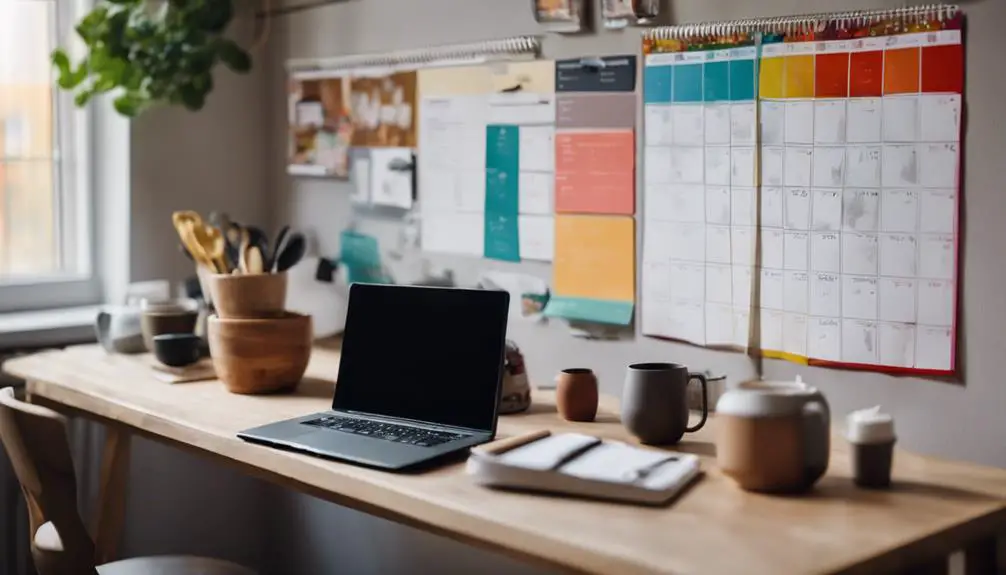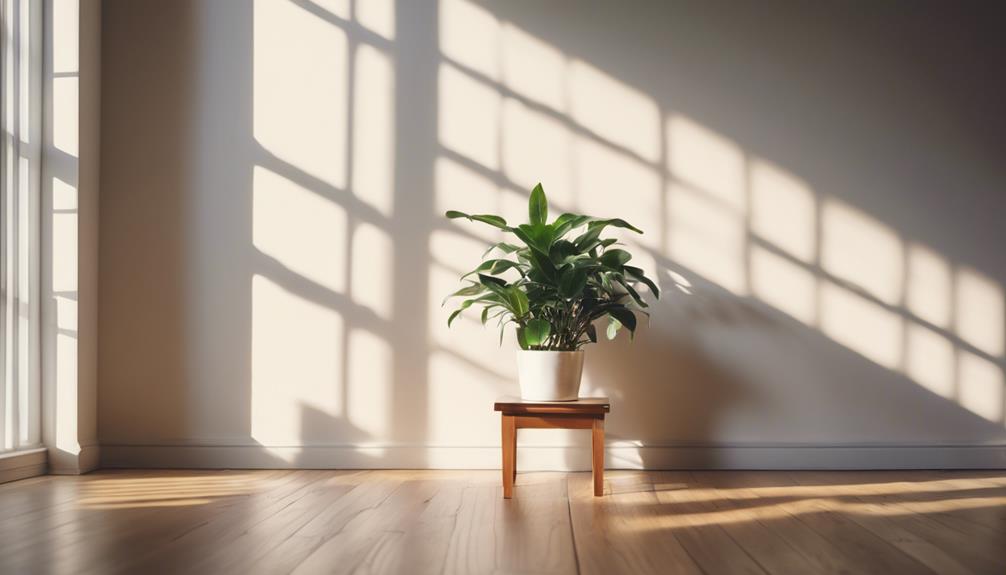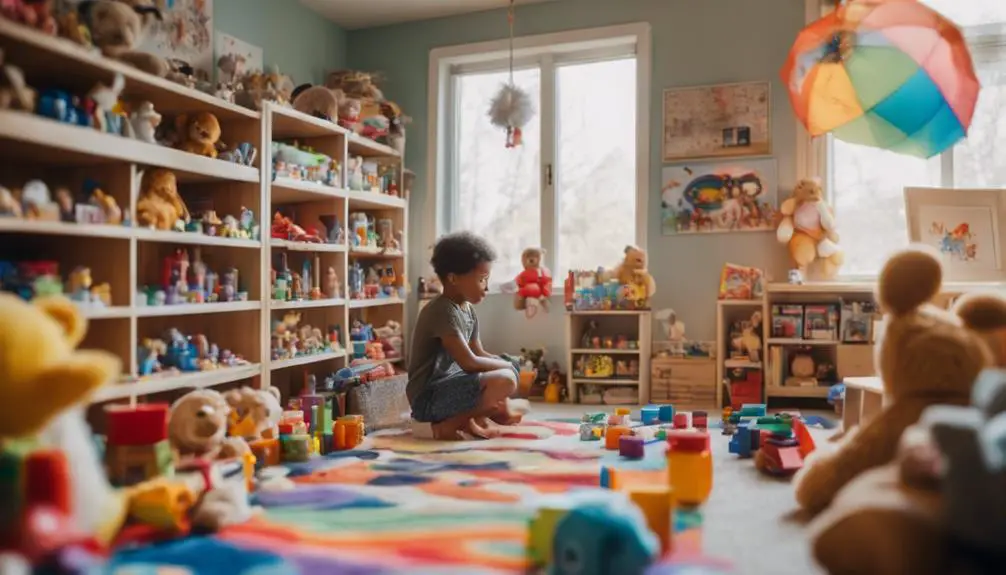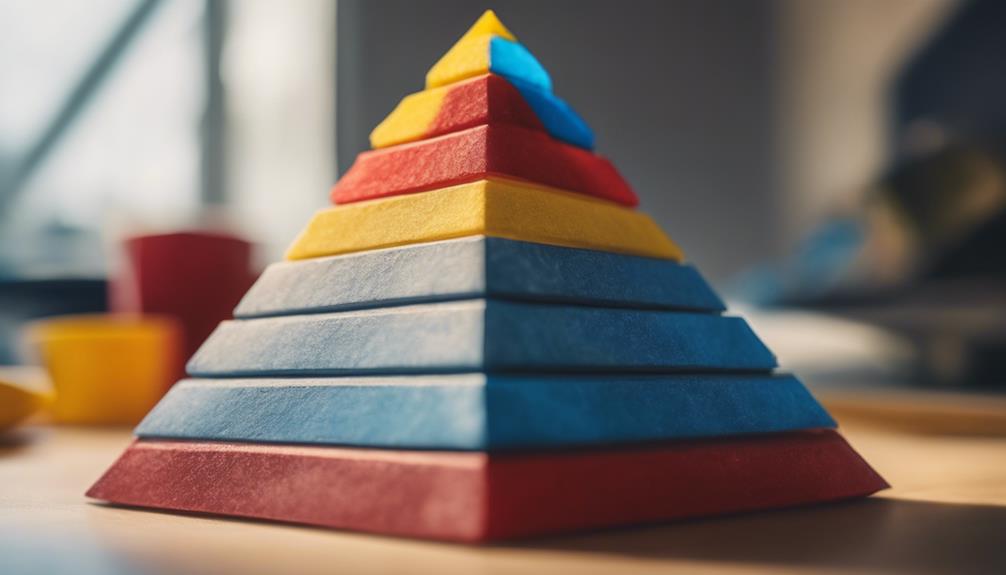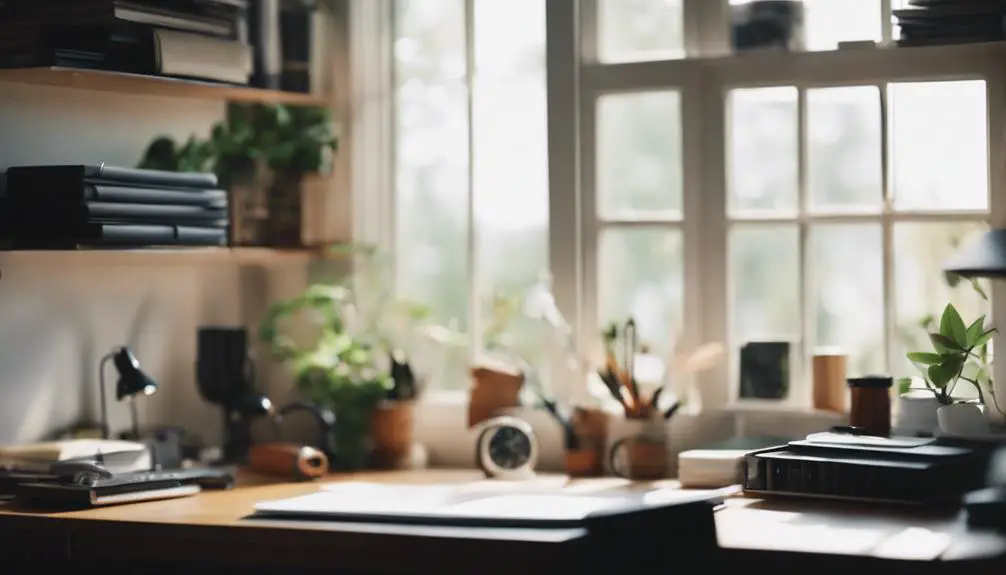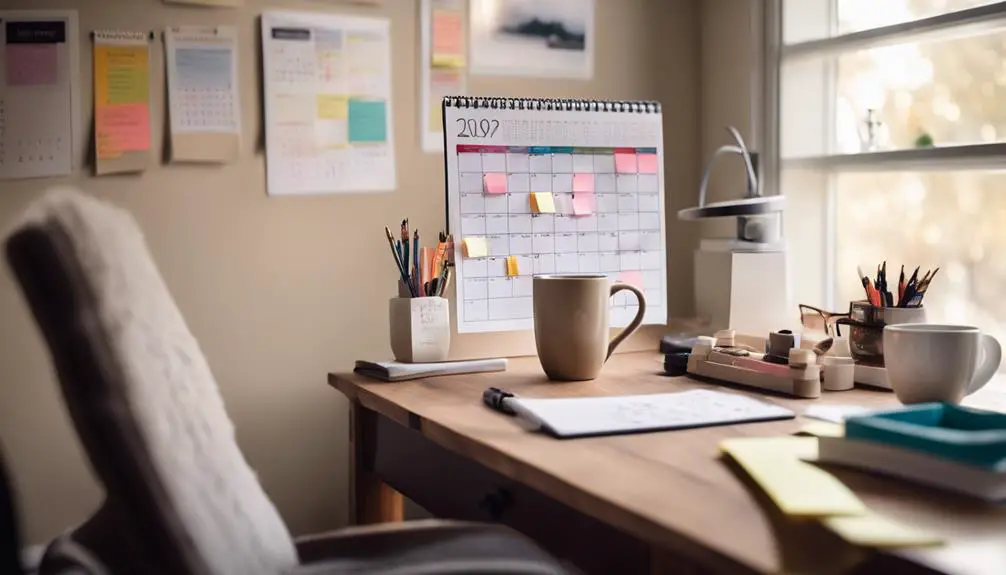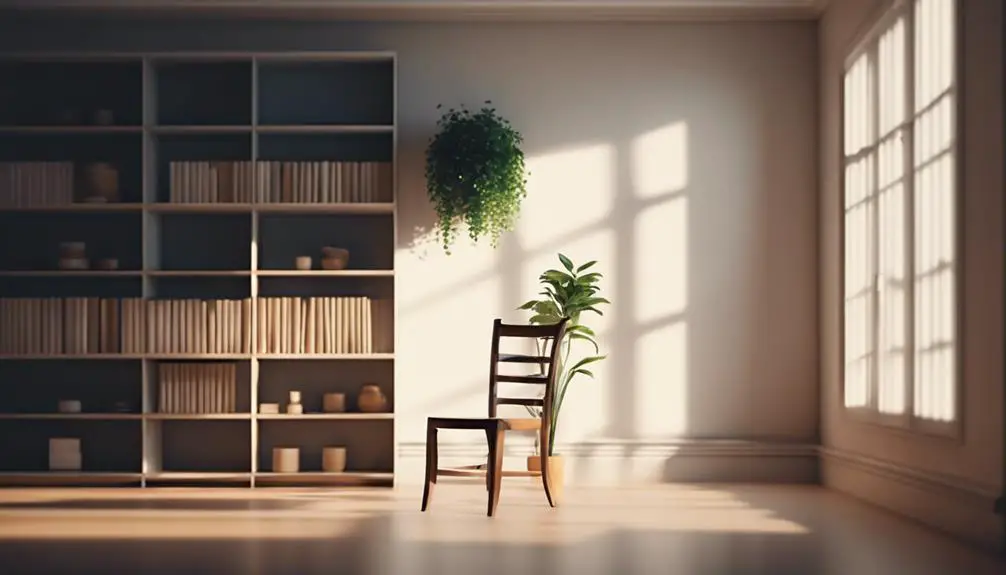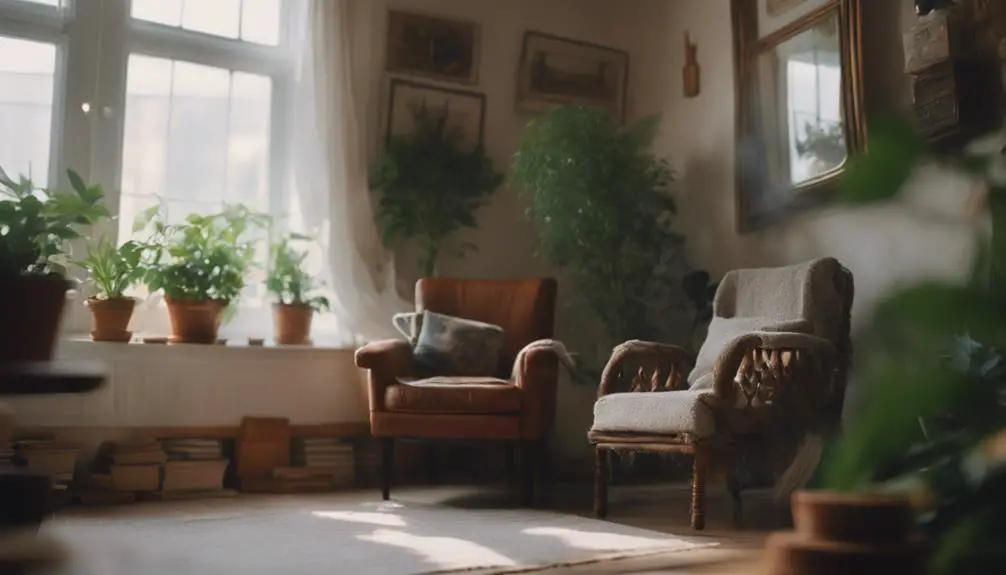When it comes to managing your belongings, a bit of organization can yield significant results. The 5-Year Rule encourages you to assess the items in your space and determine their importance to your future. By considering what you genuinely need or value, you can make thoughtful choices about what to keep and what to discard.
Emotional connections to certain items can complicate this process. Recognizing the significance of these attachments can fundamentally change how you approach clutter, leading to a more intentional living space. Examine the intricacies of this rule to discover its numerous advantages.
For instance, if you have clothing that you haven’t worn in several seasons, ask yourself if it truly serves a purpose in your life. If it’s just taking up space in your closet, it may be time to part ways with it. Consider donating or selling these items to make them available for someone else who might cherish them. This not only clears your space but also provides an opportunity for others to benefit from what you no longer need.
In terms of emotional ties, consider keepsakes that may hold sentimental value but are no longer functional. A childhood toy or a piece of furniture from a relative can evoke memories, but if they are simply collecting dust in a corner, they may not contribute positively to your current life. You might take a photo of these items before letting them go, preserving the memory without the physical clutter.
In summary, applying the 5-Year Rule can help streamline your belongings and create a living environment that reflects your current values and needs. Embracing this approach can lead to a more organized, peaceful, and purposeful space.
Understanding the 5-Year Rule
Regarding decluttering, the 5-Year Rule can significantly change your approach. This straightforward yet effective principle prompts you to assess your belongings based on their potential use within the next five years. If you can’t envision a reason to keep an item during this period, it’s probably creating more clutter than you realize.
Adopting a minimalist mindset helps you concentrate on what truly matters, allowing you to liberate yourself from unnecessary possessions.
The 5-Year Rule fits seamlessly with a decluttering philosophy that emphasizes intentionality. When you apply this guideline, you aren’t merely cleaning out your space; you’re also creating opportunities for experiences, relationships, and possessions that genuinely enhance your life. Evaluate each item to determine whether it serves a purpose or brings you joy. If it fails to do either, consider parting ways with it.
Implementing the 5-Year Rule transforms how you view your possessions. Instead of holding onto items out of a sense of duty or sentimentality, you’ll start to value quality over quantity.
This mindset not only streamlines your environment but also frees your mind, facilitating a fresh start and a more fulfilling existence. Take a moment to reflect on your belongings; liberation from clutter is within reach.
Benefits of Decluttering
Decluttering isn’t merely about tidying up your physical space; it also creates an opportunity for enhanced mental clarity and focus. A well-organized environment can significantly increase your productivity and instill a sense of order. When you maximize the efficiency of your space, you allow yourself to fully appreciate and enjoy your surroundings.
For instance, consider how a clutter-free workspace can help you concentrate better on tasks, leading to more efficient work sessions. Instead of sifting through piles of papers and miscellaneous items, you can easily find what you need, which saves time and reduces stress. This newfound efficiency not only enhances your workflow but also contributes to a more enjoyable atmosphere in your home or office.
Furthermore, maintaining an organized space can positively impact your mood. When your environment is clean and orderly, it fosters a sense of calm and control. This is particularly important for individuals who may feel overwhelmed by their surroundings. An orderly space can serve as a sanctuary, allowing for relaxation and creativity to flourish.
Mental Clarity Boost
Decluttering your space significantly enhances your mental clarity. When you eliminate chaos, you make way for new thoughts and ideas. Imagine entering an environment that embodies your values and aspirations, rather than one cluttered with distractions. This transformation creates a feeling of liberation, enabling you to concentrate on what truly matters in your life.
Mindful organization is crucial in this journey. Intentionally deciding what to keep and what to discard helps you foster an atmosphere that supports mental well-being. Each item you retain should either serve a purpose or bring you joy, contributing to a balanced environment that nurtures your mind.
As you clear away the clutter, you may observe that your thoughts become sharper and more structured. The burden of decision fatigue lightens, which allows you to redirect your energy toward creativity and productivity.
You’ll experience a sense of lightness, heightened focus, and readiness to confront challenges effectively. Embracing the liberation that comes from a tidy space is essential.
When you prioritize your mental clarity, you also enhance your overall well-being, unlocking new opportunities and paving the way for a more satisfying life.
Increased Space Efficiency
Maximizing space efficiency changes your relationship with your surroundings. When you declutter, you create an open environment that allows for easier movement and a sense of freedom. Envision entering a room that feels spacious instead of confined. This openness enhances your overall experience, making it more enjoyable to be in your space.
Utilizing effective storage solutions helps you make the most of every corner of your home. Consider options like vertical shelving, under-bed storage bins, or furniture that serves multiple purposes. By thoughtfully arranging your belongings, you not only create a tidier environment but also simplify finding items when needed. This approach to organization liberates you from the weight of clutter.
As you eliminate unnecessary items, each remaining piece will have a clear function. You’ll be left with just the essentials, crafting a personal sanctuary that reflects your identity and values. Increased space efficiency ultimately enables you to take back control of your environment, enhancing your daily life and allowing for smooth navigation throughout your home.
For practical steps, think about investing in stackable storage containers or a sofa bed to maximize your living area. These choices not only save space but also contribute to a more organized and functional home.
Enhanced Focus and Productivity
A tidy and systematic workspace significantly influences your capacity to concentrate and enhance productivity. When you eliminate clutter, you cultivate an atmosphere that allows your mind to relax, making it simpler to focus on essential tasks. With fewer interruptions, you can apply effective concentration strategies that elevate your ability to complete assignments and achieve your objectives.
Consider entering a workspace where everything is neatly arranged—no haphazard piles of documents or disorganized surfaces. This clarity instills a sense of liberation, enabling you to direct your energy towards innovative projects and efficiency techniques that optimize your daily routine.
As a result, you’ll notice that you’re finishing tasks more quickly and with improved quality.
For instance, incorporating storage solutions such as drawer organizers or desktop file holders can help maintain order. Utilizing apps designed for task management can further enhance your productivity, allowing you to prioritize effectively and track your progress.
Identifying Your Possessions
When you begin sorting through your belongings, it’s important to identify what truly enhances your life. This task involves taking a personal inventory that allows you to assess your possessions in a meaningful way.
Consider whether each item improves your life or merely occupies space.
To assist you in evaluating your possessions, reflect on these three important questions:
- When did I last use this? If it has been more than five years, it may be wise to consider parting with it.
- Does it have a function? If it doesn’t meet a need or bring happiness, it’s probably just adding to the clutter.
- Is it possible for someone else to gain from it? Think about donating or selling items that could positively impact someone else’s life.
By approaching your belongings with these questions, you can make informed decisions that lead to a more organized and fulfilling living space.
This process not only clears physical clutter but also promotes mental clarity, allowing you to focus on what truly matters.
Emotional Attachment to Items
As you sift through your belongings, you may discover that certain items hold significant emotional significance. Recognizing this emotional clutter is crucial for your decluttering process. Letting go of these attachments can prove difficult, yet it’s an essential step toward achieving a more organized life.
Consider a childhood toy that once brought you joy. While it may seem challenging to part with it, reflecting on the memories it represents can help you decide whether to keep it or let it go. Instead of clinging to the object itself, focus on the feelings and experiences associated with it. This approach allows you to honor your past while creating space for new memories.
Emotional attachments can manifest in various ways, from a stack of old letters to furniture inherited from loved ones. Each item tells a story and evokes memories, making the decision to discard them complicated. However, it’s important to remember that these memories remain with you, regardless of the physical item.
To facilitate your decluttering journey, consider using storage solutions, such as clear bins or labeled boxes, which can help you categorize items based on their emotional value. For example, you might use one box for sentimental items you wish to keep and another for those you’re ready to part with. This method not only organizes your space but also allows you to confront and process your emotional attachments more effectively.
Ultimately, the goal is to create a living environment that reflects who you’re now, rather than who you were in the past. Letting go of items that no longer serve you is a powerful act of self-care, paving the way for a more intentional and fulfilling life.
Understanding Emotional Clutter
Emotional clutter often resides in the corners of your home, taking form as items that hold memories, relationships, or past experiences.
These objects can unknowingly burden you with emotional weight, creating an attachment cycle that stifles personal development. Recognizing how your belongings evoke nostalgia is crucial for achieving emotional freedom.
Consider three typical items that many individuals find difficult to part with:
- Old photographs – They can evoke strong memories but also lead to uncertainty about which ones to keep or discard. This decision-making can become overwhelming.
- Gifts from past relationships – These items usually carry significant emotional weight, making it challenging to release them and move on.
- Childhood mementos – While they hold sentimental value, they can also trigger fears of loss, preventing you from fully embracing the present.
Taking time for self-reflection can help you assess how these memory triggers impact your emotional well-being.
Acknowledging the emotional clutter in your life allows you to create space for new experiences. Embracing change is essential for breaking free from the past and cultivating a more fulfilling future.
Consider organizing a small area of your home dedicated to these items.
For old photographs, use a digital scanner to preserve memories without the physical clutter.
For gifts from past relationships, think about creating a scrapbook or memory box that honors those times but doesn’t need to occupy your space indefinitely.
When it comes to childhood mementos, select a few that are truly meaningful and consider donating or repurposing the rest.
Letting Go Process
Letting go of items with emotional ties can feel daunting, but it is crucial for personal development. Parting with objects that bring back memories of special times or people can be challenging. However, embracing the process of letting go can lead to substantial emotional relief and a sense of liberation.
To assist you in this journey, refer to the table below, which outlines common emotions associated with letting go:
| Emotion | Action | Outcome |
|---|---|---|
| Nostalgia | Recognize the memory | Value the past |
| Guilt | Consider the item’s purpose | Release the burden |
| Fear of loss | Evaluate the significance | Embrace change |
| Attachment to the past | Envision your future | Make new memories |
As you sift through your possessions, ponder the reason behind your attachment to each item. Is it providing value in your life today, or is it merely occupying space? Making the conscious choice to let go of these attachments will not only help you declutter your physical environment but also liberate your mind and emotions. Letting go creates an opportunity for fresh experiences and new possibilities.
For instance, if you find an old dress that reminds you of a past relationship, think about whether it enriches your current life. If not, consider donating it to someone who might cherish it. This act not only clears your space but also gives someone else the chance to create their own memories. Embrace the process, as it ultimately leads to personal growth and transformation.
The 5-Year Assessment Process
Your space requires a comprehensive evaluation every five years to identify what genuinely enhances your life. This assessment isn’t solely focused on physical items; it also involves ensuring that your possessions align with your personal values and any lifestyle changes you may have experienced.
Implement a decision-making framework that steers you toward principles of minimalism and emotional resilience.
Consider these three vital steps during your assessment:
- Reflective Journaling: Allocate time to write down your thoughts and feelings about each item. Determine whether it brings you joy or fulfills a specific purpose in your life.
- Assessment Criteria: Set up criteria that resonate with your personal values. Evaluate if each item aids in your long-term goals and supports sustainable habits.
- Organizational Systems: Develop systems that enhance convenience and efficiency. Assess how effectively your current systems contribute to maintaining a clutter-free environment.
This evaluation process is crucial for creating a living space that reflects who you’re and what you value.
It allows for a deeper understanding of your relationship with your belongings, ultimately leading to a more fulfilling lifestyle.
Setting Timelines for Decision-Making
After assessing your belongings and considering their importance, the next step is to set timelines for making decisions about what to keep and what to part with. Establishing deadlines can instill a sense of urgency, which helps you avoid falling into indecision. Prioritize your items based on their significance and your readiness to let them go.
Implement time management techniques to designate specific time slots for each category, making the process feel more structured and less overwhelming. To maintain motivation, consider creating a vision board that illustrates your decluttered space, serving as a source of inspiration throughout your journey. Involve accountability partners—friends or family members who can support and encourage you to stay focused on your goals.
Utilize reflection prompts to evaluate how each item contributes to your aspirations. Determine whether they support a life of freedom and fulfillment. This gradual approach allows you to develop sustainable habits, ensuring that your decisions are thoughtful and intentional.
Setting clear objectives for your decluttering project is crucial; it provides direction and purpose. With these strategies in place, you’re well-prepared to make confident choices, transforming your space into a haven that genuinely represents your identity.
Categories of Items to Consider
When it comes to decluttering, it’s important to concentrate on particular categories of items. This approach helps streamline your decision-making process and paves the way for a more organized living space. Here are three key categories to consider:
- Clothing Items: Examine your wardrobe critically. Assess each piece and determine if you genuinely wear it. If an item hasn’t seen the light of day in the last five years, it may be time to part ways. This not only frees up space but also allows you to appreciate the clothes you truly love.
- Kitchen Gadgets: Take a look at the tools and gadgets in your kitchen. Reflect on whether you really need that avocado slicer or fondue pot. Simplifying your kitchen can enhance your cooking experience, making it easier and more enjoyable to prepare meals.
- Toys Collection: For those with children, toys tend to multiply rapidly. Go through the toys and keep only those that your child actively engages with. Donating the rest allows them to find a new home and gives you a sense of accomplishment.
Consider also evaluating your furniture, electronic devices, library of books, holiday decorations, craft supplies, beauty products, and sports equipment.
Focusing on these categories helps you identify what no longer serves you. This leads to a lighter, more liberated living space, making it easier to enjoy your environment.
Items You Haven’t Used
Many of us have items stashed away in closets or drawers that haven’t been used in what feels like forever. Take a moment to reflect on those once-appealing gadgets that are now gathering dust. Forgotten clothes sit in your wardrobe, and old furniture occupies valuable space.
If you haven’t touched them in five years, it’s time to consider their future. Expired items crowd your pantry, while duplicate tools lie unused in a drawer. Outdated technology likely collects cobwebs instead of serving a purpose.
Even those sentimental trinkets and childhood toys you once treasured may no longer hold the same significance. Unused gifts can feel burdensome, and seasonal decorations that are only relevant for a few weeks each year don’t justify their presence.
Letting go of these unnecessary items creates opportunities for new experiences and a more meaningful environment. Clearing out what you haven’t used allows you to focus on what truly matters.
Decluttering goes beyond simply discarding items; it’s about making space for your future. Release the past and embrace a lighter, more liberated version of yourself.
Sentimental Items and Memories
When it comes to sentimental items, you may find yourself in a difficult position between keeping and discarding them. These cherished objects often carry significant memories that contribute to your identity.
It’s crucial to assess their importance in your life thoughtfully. Reflect on which items genuinely encapsulate meaningful experiences and which ones might merely occupy space without serving a purpose.
For instance, a handwritten letter from a loved one can evoke strong emotions and remind you of special moments shared together, making it a meaningful keepsake worth preserving.
On the other hand, a broken trinket that no longer holds any emotional value may be best left behind. By examining each item closely, you can make informed decisions about what to keep and what to let go.
This process not only helps declutter your space but also allows you to honor the memories that truly matter.
When you focus on maintaining only those items that resonate with you, your environment can become a more serene place, filled with reminders of joy rather than clutter.
Importance of Memories
How do we determine which sentimental items genuinely hold significance in our lives? This is a challenge many face while trying to maintain a sense of nostalgia in their homes. Although it’s essential to preserve memories, it’s impractical—and often unnecessary—to keep everything.
Here are three categories of items worth considering:
- Photographs: These images freeze moments in time, allowing us to revisit experiences filled with joy, love, and laughter. A well-organized photo album can become a cherished keepsake, sparking stories and emotions that connect us to our past.
- Letters or Cards: Written words often carry deep emotional weight. They can express feelings that may not have been articulated in person, preserving a snapshot of relationships at a particular moment. Keeping a selection of meaningful letters can serve as a reminder of the bonds we share with others.
- Gifts from Loved Ones: Gifts can hold sentimental value, but it’s important to reflect on their relevance to your current life. Some items may symbolize a previous chapter, while others may still resonate with who you’re today. Evaluate whether these gifts bring you joy or if they simply occupy space.
In essence, the process of curating sentimental items should focus on quality over quantity, allowing you to create a space that truly reflects your life and memories.
Preserving Meaningful Keepsakes
Preserving meaningful keepsakes requires a thoughtful approach that balances the desire to cherish memories with the need to avoid clutter. It is essential to recognize the significance of each item in your collection. Evaluate whether a keepsake genuinely brings happiness or serves a meaningful function in your life.
Consider the following table to help you assess and prioritize your keepsakes:
| Keepsake Type | Significance | Recommended Action |
|---|---|---|
| Photos | Capture important moments | Digitize them and keep only the most cherished ones |
| Gifts from loved ones | Symbolize your relationships | Display them prominently or consider donating those that no longer resonate |
| Travel souvenirs | Remind you of special experiences | Select a few favorites that evoke strong memories |
| Childhood items | Reflect your personal growth | Keep one or two that hold the most meaning |
| Heirlooms | Connect you to your family heritage | Preserve these items carefully and share their stories with others |
Tips for Letting Go
Experience the liberation that comes from releasing items that no longer benefit you. Embracing guilt-free decluttering can significantly change both your environment and your mindset.
Here are three actionable strategies to guide you on this path:
- Set a Timer: Commit to decluttering for just 10-15 minutes each day. This approach makes the task feel more manageable and prevents it from becoming overwhelming.
- Create a “Maybe” Box: If you’re uncertain about whether to keep an item, place it in a designated box. If you don’t use or think about it in six months, consider letting it go.
- Envision Your Space: Imagine how your home will feel and look without the clutter. This mental image can inspire you to part with items that hold you back.
Letting go isn’t merely about clearing physical space; it also opens the door to new opportunities and experiences. Each item you decide to release brings you closer to a life characterized by clarity and purpose.
Utilize these practical strategies to move forward with confidence, recognizing that your journey toward freedom starts with every choice you make today.
The Impact of Clutter
Clutter can greatly impact your mental and emotional well-being, often instilling a sense of disorder that infiltrates your everyday life. Many individuals may not fully grasp its effects until they start recognizing the consequences of their disorganized environment. Each item retained contributes to an emotional weight that hinders your ability to concentrate, unwind, or savor the present moment.
When your surroundings feel constricted and messy, it can trigger feelings of anxiety and being overwhelmed. This persistent distraction can drain your energy and diminish your drive, leading to a sense of entrapment within your own living space. Tasks may be postponed, or specific areas may be avoided altogether, exacerbating the situation.
Consider the liberation that arises from a tidy and structured environment. As you release items that no longer add value to your life, you open up space for clarity, creativity, and tranquility. Tackling clutter means more than simply organizing your possessions; it involves freeing your mind and emotions as well. Embracing the journey toward a more organized life can reveal a renewed sense of joy and purpose waiting for you.
For instance, if you find that old clothes take up valuable closet space, consider donating them to a local charity. This not only helps you clear your space but also benefits someone in need.
Practical tools like storage bins or label makers can aid in maintaining order, allowing you to enjoy your environment more fully. Prioritizing decluttering can lead to significant improvements in your quality of life.
Creating a Decluttering Schedule
To develop an effective decluttering schedule, it’s essential to create a timeline that aligns with your daily routine.
Begin by identifying the areas in your home that require the most focus. This approach allows you to address clutter in a structured manner, making the task feel less overwhelming.
Start with high-impact spaces such as the living room or kitchen, where clutter tends to accumulate quickly. Allocate specific time blocks for each area, such as dedicating one weekend to the living room.
During this time, sort items into categories: keep, donate, or discard. This method not only helps you clear the space but also encourages you to reflect on what you truly need and use.
Consider using storage solutions that fit your style, such as decorative bins or shelving units, to organize items you decide to keep. This won’t only enhance the functionality of your space but also contribute to a more visually appealing environment.
Remember, the goal of decluttering is to create a home that feels serene and inviting.
As you progress through your schedule, celebrate small victories to maintain motivation. Whether it’s enjoying a moment in your newly organized space or sharing your success with friends, acknowledging your efforts can make the process enjoyable and rewarding.
Establishing a Timeline
Feeling overwhelmed by the idea of decluttering is common, yet setting a timeline can transform the experience into something manageable and even enjoyable. Effective timeline management allows you to break your decluttering process into smaller, achievable tasks.
Establishing clear milestones not only helps you stay organized but also provides a sense of accomplishment as you complete each segment. Here’s a straightforward guide to creating your timeline:
- Select a Start Date: Identify a specific day to begin your decluttering efforts. Mark this date on your calendar and make a commitment to start on that day.
- Divide and Conquer: Break your living space into distinct areas or categories. Allocate a specific timeframe for each section; for example, you might dedicate a weekend to tackle a single room or plan to declutter your entire house over the course of a month.
- Acknowledge Achievements: Once you finish decluttering an area, take a moment to recognize your success. This practice not only boosts your motivation but also reinforces the liberating feeling that comes with a decluttered space.
With a well-structured timeline, you’ll likely feel a sense of lightness and freedom. Embrace this journey, and let each completed milestone lead you toward a more organized and fulfilling life.
Prioritizing Decluttering Areas
When creating a decluttering schedule, prioritizing areas that significantly affect your daily life is crucial. Start with a space evaluation to pinpoint clutter hotspots. Concentrate on areas that disrupt your routine, such as the kitchen, bedroom, and living room. Tackling these high-priority spaces first will provide you with a swift sense of freedom and accomplishment.
To help organize your decluttering schedule, here’s a straightforward table:
| Area to Declutter | Priority Level | Estimated Time |
|---|---|---|
| Kitchen | High | 2 hours |
| Bedroom | Medium | 1.5 hours |
| Living Room | High | 2 hours |
| Office/Workspace | Low | 1 hour |
Use this table to allocate specific time slots based on priority. High-priority areas should be addressed first, allowing you to reclaim your space effectively. As you work through each section, recognize that decluttering is a process toward a more liberated living environment. Celebrate your achievements, no matter how small, and relish the freedom that comes from a more organized home.
For instance, in the kitchen, consider using clear bins for organizing pantry items or drawer dividers for utensils. In the bedroom, think about donating clothes that you haven’t worn in the past year. These practical steps can transform how you interact with your space daily, enhancing your overall quality of life.
Strategies for Effective Decluttering
Effective decluttering necessitates a strategic approach, particularly if you aim to achieve sustainable changes in your space. Embracing a minimalist mindset can significantly enhance the benefits of decluttering, resulting in a more serene and organized environment.
Here are three impactful strategies to initiate your decluttering journey:
1. Establish Specific Objectives: Clearly articulate what you want to accomplish. Whether your aim is to create additional space or simply minimize clutter, a well-defined vision will steer your efforts in the right direction.
For instance, you might set a goal to reduce your wardrobe by 30% or transform your home office into a more efficient workspace.
2. Concentrate on One Area at a Time: Focus your decluttering efforts on a single room or even a specific section within a room, such as a closet or a drawer. This approach reduces feelings of overwhelm and allows for tangible progress to be made quickly.
Witnessing the transformation of one area can serve as a powerful motivator, encouraging you to tackle the next space.
3. Implement the Five-Year Rule: If you haven’t utilized an item in the past five years, it may be time to part with it. This guideline assists in distinguishing between essential belongings and items that merely occupy space.
For example, if you have a kitchen gadget gathering dust that you haven’t used since you received it, consider donating or selling it.
Finding New Homes for Items
Finding new homes for items can significantly enhance your decluttering experience. Letting go of possessions that no longer benefit you not only frees up space but also supports those in your community who might need them.
Consider donating to local charities or organizations that accept gently used clothing and furniture, as these contributions can have a meaningful impact.
For items that can’t be donated, look into recycling opportunities available in your area. Many communities provide eco-friendly disposal options that prevent waste from ending up in landfills, promoting environmental sustainability.
If you have items in good condition, selling platforms like Facebook Marketplace or Poshmark can help you convert clutter into cash, giving your belongings a second life while benefiting your wallet.
Community exchanges and swap events are also effective ways to pass on items. These gatherings allow you to trade with others, fostering a culture of reuse and reducing overall waste.
If you’re tackling digital clutter, responsibly disposing of electronics is crucial. Research specialized recycling programs that ensure proper handling of e-waste, protecting both your data and the environment.
Maintaining a Clutter-Free Space
A clutter-free space begins with habits that consistently keep disorder in check. After you have cleared out unnecessary items, it’s essential to sustain that fresh atmosphere, which can significantly enhance your sense of freedom and control.
Implement these effective habits to ensure your environment stays welcoming:
- Daily Tidying: Dedicate a few minutes each day to return items to their proper places. This simple action prevents mess from building up and helps maintain an organized environment. For instance, after using a mug, wash it and place it back in the cabinet rather than leaving it on the counter.
- Weekly Review: Take some time each week to evaluate your organization systems. Determine if they’re effective for your current needs. If you notice that certain areas are becoming cluttered, modify your approach to better align with your lifestyle. For example, if your home office files are piling up, consider implementing a filing system that categorizes documents by priority.
- Mindful Acquisition: Before adding new items to your home, reflect on their significance. Ask yourself whether they’ll enhance your life or just contribute to the clutter. This practice not only helps maintain a tidy space but also fosters a sense of intentionality in your purchases. For instance, if you’re considering a new shirt, think about whether it complements your existing wardrobe and if you truly need it.
Incorporating these habits into your daily routine can significantly contribute to a clutter-free and organized space, ultimately enhancing your quality of life.
Mindfulness in Decluttering
Mindfulness is a crucial aspect of the decluttering process, enabling you to make thoughtful decisions about what remains in your living space. Engaging in mindful breathing helps you ground yourself, creating a serene atmosphere conducive to introspection. When you take a moment to breathe deeply, you gain insight into what truly enhances your life and aligns with your vision of intentional living.
As you examine your belongings, consider whether each item brings you joy or resonates with your core values. This self-reflection empowers you to release the unnecessary and embrace only what enhances your sense of freedom. Mindfulness allows you to connect with your emotions, helping you identify attachments that may be hindering your progress.
Throughout this journey, it’s vital to tackle each decision with clarity and compassion. Trust your instincts to determine what deserves a space in your home. By fostering a mindful approach, you can find satisfaction in the process and create a sanctuary that genuinely reflects who you are.
Embracing mindfulness in decluttering liberates you from the burden of excess, enabling you to fully engage with the present moment. For instance, if you’re unsure about a particular item, consider how often you use it or how it makes you feel. A decorative vase that hasn’t seen flowers in years may be a candidate for donation, while a cherished book that inspires you can remain on your shelf.
Tools like donation boxes or organizing apps can further assist you in this mindful decluttering journey, providing structure and clarity as you navigate your possessions.
Celebrating Your Progress
After investing time in decluttering, it’s important to pause and recognize your progress. Acknowledging your achievements boosts motivation and highlights the sense of freedom you’ve created.
Here are three impactful ways to honor your journey:
- Establish Celebration Rituals: Create personal rituals that resonate with you. Whether it’s hosting a small dance party in your living room or enjoying a cozy movie night, let your successes take center stage.
- Define Progress Milestones: Divide your decluttering journey into smaller, achievable milestones. Celebrate each one; these moments of reflection will serve as reminders of your progress and how much you’ve accomplished.
- Connect with a Supportive Community: Share your experiences with friends or accountability partners. Their encouragement can enhance your sense of achievement and make the process even more gratifying.
Incorporate gratitude practices to recognize your hard work. Consider keeping visual reminders of your progress, like before-and-after photos, to help you appreciate your accomplishments.
Embrace positive reinforcement by rewarding yourself for each milestone reached. Celebrating your decluttering victories fosters a lasting sense of freedom and clarity in your life.
Conclusion
Embracing the 5-Year Rule means more than just eliminating clutter; it is about creating an environment that fosters clarity and satisfaction. When you decide to part with items that no longer benefit your life, you open up space for tranquility that aligns with your goals. Each small win in this process deserves recognition, as you refine your living area, paving the way for a future filled with meaning and serenity. This journey emphasizes the importance of being intentional in your choices, allowing you to find joy in the liberation that comes with a carefully selected life.
For instance, consider the clothes in your closet. If you haven’t worn something in the past five years, it may be time to donate or sell it. This not only clears physical space but also mentally prepares you for new experiences. Similarly, in your workspace, eliminating outdated paperwork can enhance focus and productivity. Celebrate these actions as you build a more purposeful living environment.

